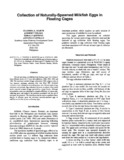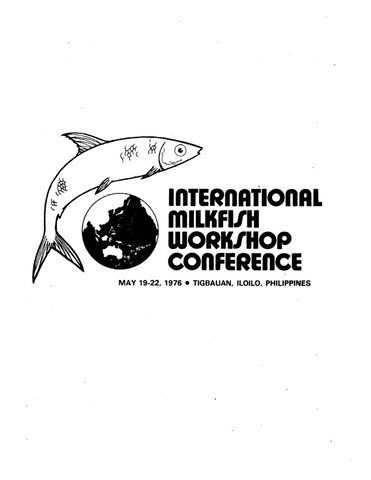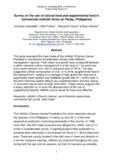Collection of naturally-spawned milkfish eggs in floating cages
- Global styles
- MLA
- Vancouver
- Elsevier - Harvard
- APA
- Help

View/
Date
1986Page views
5,883ASFA keyword
AGROVOC keyword
Taxonomic term
Metadata
Show full item record
Share
Abstract
Natural spawnings of milkfish from floating cages were obtained from different stocks of 5-7 year-old milkfish in 1980, 1981, 1983 and 1985. The maximum number of eggs collected in 1980, using a series of 1-m diameter stationary plankton nets, was about 900. Increased collections were obtained in succeeding years with different types of egg collectors and methods. Egg collection, however, is inferior when based on the expected number of eggs spawned by a single female. Although no systematic study was attempted to compare efficiency of various egg-collecting gears and methods, the problems associated with the use of each gear are presented. The experience may be used as a guide in future designs of efficient gears of collecting naturally-spawned eggs of milkfish or other fish species in floating cages.
Suggested Citation
Marte, C. L., Toledo, J., Quinitio, G., & Castillo, A. (1986). Collection of naturally-spawned milkfish eggs in floating cages. In J. L. Maclean, L. B. Dizon, & L. V. Hosillos (Eds.), The First Asian Fisheries Forum. Proceedings of the First Asian Fisheries Forum, 26-31 May 1986, Manila, Philippines (pp. 671-674). Manila, Philippines: Asian Fisheries Society.
Type
Conference paperCollections
- Conference Proceedings [299]
Related items
Showing items related by title, author, creator and subject.
-
International Milkfish Workshop Conference, May 19-22, 1976, Tigbauan, Iloilo, Philippines
Southeast Asian Fisheries Development Center, Aquaculture Department; International Development Research Centre (Aquaculture Department, Southeast Asian Fisheries Development Center, 1976) -
Survey on the use of natural food and supplemental feed in commercial milkfish farms on Panay, Philippines
Lückstädt, Christian; Focken, Ulfert; Coloso, Relicardo; Becker, Klaus (Stuttgart University, 2000)This study evaluated the feed intake of the milkfish (Chanos chanos Forsskål) in commercial brackishwater ponds under different management regimes. Feed intake and growth were compared between a rather intensive culture ... -
Ongoing research studies on maturation and spawning of milkfish, Chanos chanos at the brackishwater shrimp and milkfish culture applied research and training project, Jepara, Indonesia
Alikunhi, K. H. (Aquaculture Department, Southeast Asian Fisheries Development Center, 1976)The paper gives an account of the research work carried out at Jepara, Indonesia, on induction of maturity of milkfish in ponds and enclosures, and procurement of the spawners from the wild for seed production by hypophysation. ...





